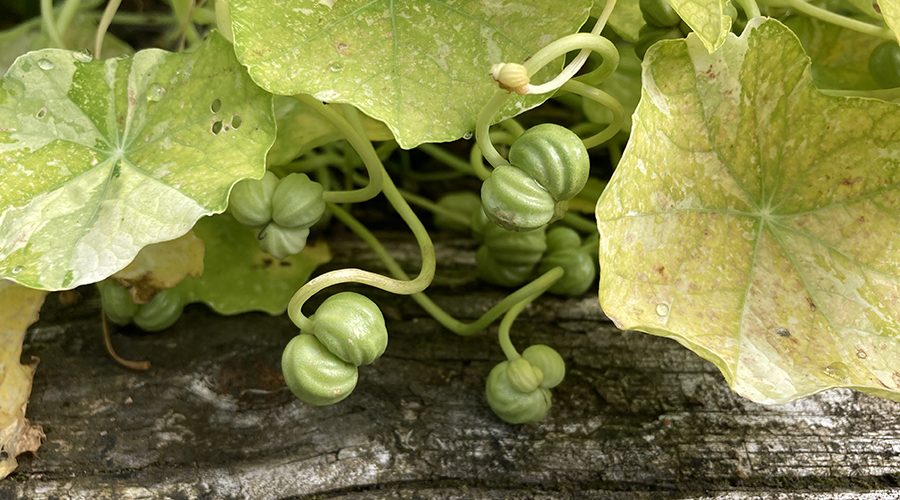This can be a surprisingly difficult question, especially if you are new to growing. In this article, we take a look at some of the plants that readily self-seed and talk you through the pros and cons of letting them go nuts!
Plants that self-seed easily:
This isn’t a complete list, but we’ve picked out some of the keenest self-seeders for you to be aware of!
Veg Plants: Wild Rocket, Mizuna, Mustard Leaves, Leeks, Onions
Flowers: Calendula, Oxeye Daisy, Borage, Nasturtium (pictured), Viola, Foxgloves, Marigold, Tagetes, Nigella, Cornflower
Herbs: Chives, Marjoram, Oregano, Bronze Fennel, Dill, Chamomile, Feverfew
Fruit: Strawberries, Blackberries
The pros of letting things self-seed:
If you have a big enough plot, it can be quite rewarding to et things self-seed naturally and form little pockets. You may find a gorgeous clump of oxeye daisies in one corner of your wildflower garden, or perhaps the wild rocket will self-seed and take over its own patch giving you a wonderful source of cut and come again leaves throughout the year.
Letting things self seed can save you money on plug plants and shop-bought seeds, so it can be a good way of growing for free.
It can safe a fair amount of time and effort as well, if you leave everything to simply do its own thing rather than trying to manage it.
The cons of letting things self-seed:
The main problem is that the plants can get somewhat out of control. You might find that that lovely clump of oxeye daisies has self-seeded in its second season and that they have taken over half your garden. You may find a patch of strawberries growing in a herb bed, or you may find that your garden path has been swamped by marjoram.
Once things have got out of control, it can actually take more work to get back on top of it all. In this instance, you may regret not cutting things back before they went to seed.
For a small plot, self-seeding can be more challenging and leave you with little space for new, seasonal planting.
So, what should I do?
Our advice would be to cut things back or pull plants up as they move into seeding. It doesn’t take long, and if you’re pulling them up then it creates pace quite quickly for new plants. Right now, for example, you could be pulling up a bed of wild rocket and mizuna and planting up beetroot or carrots to harvest in mid-autumn.
You can put any plants that you pull up into your compost pile, before the seeds have formed, and they will then go back into the cycle of your plot, breaking down into compost to be used to nourish the soil that the plants grow in next year.
If you would like to let some things re-seed, one way of doing it is to consciously re-seed – we quite often do this by picking off the chive heads once we can see that the seeds have formed, or nasturtium/calendula seed heads, and then deliberately dropping them into the soil in a certain patch. This way, we have a little more control over where new plants grow. With a few seeds sown, the rest can be cut back or pulled up without any feeling of regret.

